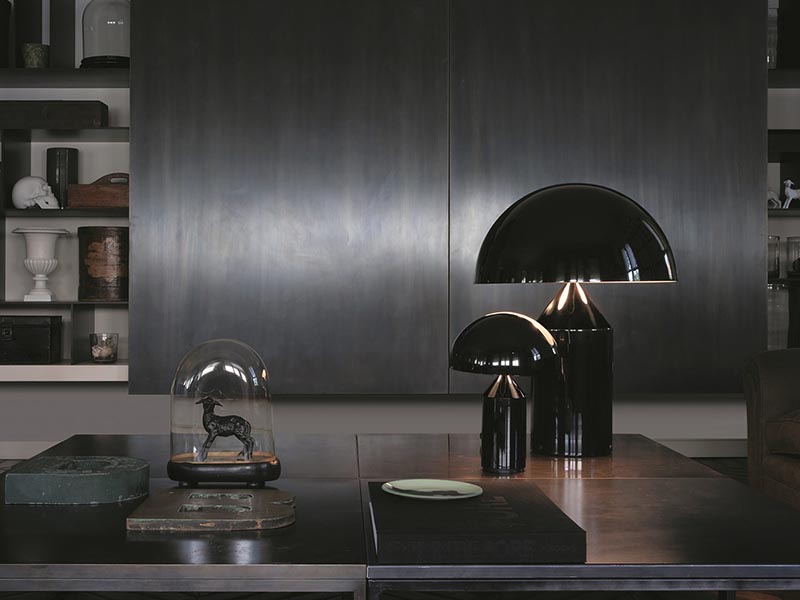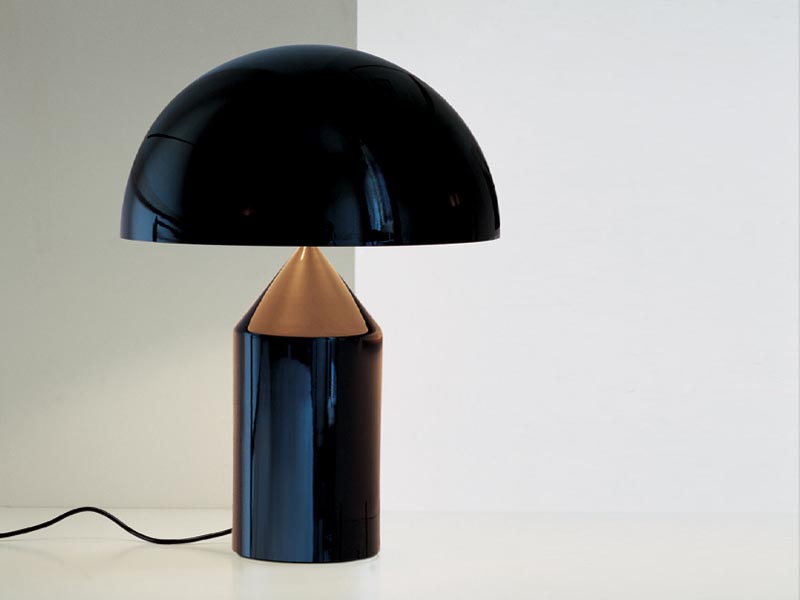Overview
Oluce is the oldest Italian design company in the lighting sector still in operation today. Oluce lighting’s design aesthetic is crisp, linear, and decorative. A subtle, intellectual beauty that over the years has led the company to produce some of the more recognizable and admired iconic lighting in the world. Its lamps appear in the most important permanent design collections worldwide.
Atollo Table Lamp, Black, by Vico Magistretti for Oluce
- Classic Italian Modern Sesign
- Winner of the Compasso d'Oro 1979
- Metal
- Made in Italy




Specifications
Designer

Vico Magistretti (1920-2006) was a highly influential 20th century Italian furniture designer and architect known for his experimental yet remarkably harmonious designs that ranged from minimalist furnishings to elaborate architectural façades. During his career, Magistretti earned numerous awards for his contributions to Italian furniture design and product design during the postwar era. As a young man, he befriended Ernesto Nathan Rogers, the influential architect who had established the BBPR Rationalist architectural collaborative in 1932. Rogers’ friendship and guidance would serve as inspiration for Vico Magistretti. After the war, he embarked on a series of innovative furniture designs for the R.I.M.A. exhibition and for the Triennale di Milano and worked with premier furniture designers of the time, such as Achille Castiglioni, Pier or Marco Zanuso. During the 1950s and 1960s, he designed furniture for most of the major Italian furniture makers. Examples of his work include the Carimate chair for Cassina (1959); the Ecclise table lamp for Artemide (1966), which won Vico Magistretti his first Compasso d’Oro award in 1967; the Selene stacking chair for Artemide (1968) and the Maralunga armchair for Cassina (1973), which won Magistretti his third Compasso d’Oro in 1979. At the same time, Magistretti was involved in an increasing number of architectural projects. His architectural aesthetic, just as his furniture design philosophy, was characterized by its streamlined contours of modernity and a notable consideration for the use of color, material, texture, and pattern. «I mainly design buildings and only sometimes design objects that my family or I may need at a given moment. The system is comparable to that of Robinson Crusoe which, in my opinion, has its advantages because it obliges to a design really driven by the necessities, designed only to achieve the essential values of an object and not all those marginal superstructures which are certainly not the soul of good design.»



 @DESIGNQUARTERS
@DESIGNQUARTERS